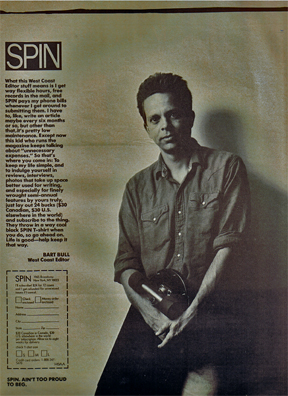(As a kid in Arizona, they used to make you memorize The Five C's, which included "Climate" but not "Communism" nor "Capitalism" nor "Corazon..."; but hey, hence the title for an Arizona-based magazine....) (and yes, dammit, there are such awkward asthmatic aardvarkian-esque things as magazines from Arizona... Dude, we can totally read — we're just not in the mood, so we look at the pictures.)
Arizona's first state governor wasn't a Pontiac dealer.
Instead, he was a Zoroastrian. It was the Pontiac dealer — the guy who came in after the one-eyed newspaper columnist and then, eventually, the Mexican-born ex-boxer — who officially outlawed Martin Luther King Day. Then there was that early governor who refused to approve the state flag. But the governor who saw UFOs over Phoenix came way after that. Then he founded a French cooking school. (There'll be a test on this later, so take notes.)
A white pyramid looms over the mountains where Phoenix and Scottsdale and Tempe crunch together, marking the tomb of that first Zoroastrian governor guy. But since nobody remembers him, or knows why there's a white pyramid parked against the red rocks and cactus, or can figure out just what a Zoroastrian is, it simply serves as a symbol of just exactly how Arizona has always been, and likely always will be. Arizona is intentionally weird, oddball squared, a place where bold eccentrics have historically stumbled in to see just how they stacked up against the nutjobs who were currently running the joint.
Some of those nutjobs, of course, were those dang Indians — like, for instance, the Apaches, who were said to be able to run 50 miles a day (and bear in mind that Arizona was hot as hell, even before they paved it). It's hard to understand why the US Cavalry didn't just turn their horses around and go pick on the Hopi, who were pushovers, and a lot slower too. Perhaps this is why even today our license plates say "The Grand Canyon State" rather than "Famous Frybread," or "Geronimo Lives."
Tombstone, "The Town Too Tough To Die," became "The Town Too Tourist-Dependent To Close Until 9:15 PM," but that was later. Scottsdale used to be "The West's Most Western Town," but that was before it became a golf course. Phoenix ("Park And Lock It; Not Responsible") was built right on top of a system of canals that had originally been constructed by the Hohokam Indians, who wisely disappeared, apparently annoyed by the sight of Apaches sprinting back and forth. Tucson (pronounced "Tuk-sin") has traditionally been distinguished by its lack of canals, and by the fact that it was never the West's Most anything, perhaps its saving grace. Still, it features Old Tucson, where all the Western films that weren't filmed in Hollywood occurred.
Arizona, a place that has been, among other things, part of Old Spain, New Spain, Mexico, New Mexico, Sonora, the official State of Deseret, the Gadsden Purchase, the Compromise of 1850, the glorious Confederacy, the glorious Union, the State of Nevada, the Treaty of Guadalupe Hidalgo, the Seven Lost Cities of Cibola, and . . . well, those dang Indians were so lousy at writing names down. Anyway, Arizona has a proud right to a perpetual identity crisis.
Ok, so the Clantons and the Earps were genuine trouble, one and all imported from out of state —snowbirds, in Arizona terms. But during my own lifetime, the Devil's Disciples and Satan's Slaves and the Mongols and the Bandidos and the Hells Angels and the Vagos and all manner of other well-meaning darlings have been among the genuine outlaws. (I used to have a safety-card from one of those charming dance-clubs, until the Secretary-Treasurer needed it back, because it was the only one he had, and there were cute girls in the bar he wanted to impress.) Arizona is the proud state that first established the law that you couldn't wear your hogleg pistol into the topless club, a fine example of our state's firm, focused grasp on practical jurisprudence.
But 'twas ever thus. John C. Fremont, Arizona's first territorial governor, spent most of his career exploring California, for which you can hardly blame him. He was told he had to reside in Arizona, or resign. He resigned.
